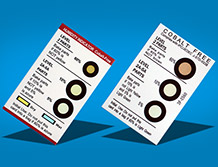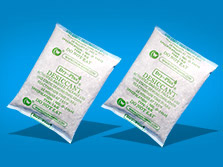Analysis of "oil rancidity" of food spoilage
Grease is a general term for oil and grease. Those that are liquid at room temperature are oil, and those that are solid are grease.
"Food fat rancidity" refers to foods containing fats, which undergo changes in sensory properties such as discoloration, odor changes, etc. (such as hala flavor, etc.) due to the combined effects of fungi, enzymes, oxygen, light, and temperature during storage. Eating such foods can often cause adverse physiological reactions or food poisoning.
1. Reasons for the rancidity of food
There are two main reasons for oil rancidity. One is the bio-type enzymatic hydrolysis process, that is, the hydrolysis process caused by the enzymes in the residues of animal and plant tissues and the enzymes of external microorganisms. The second is a pure chemical process, mainly due to the hydrolysis and the self-oxidation of unsaturated fatty acids under the combined action of light, oxygen, and water. These two situations usually happen at the same time, but they may be mainly manifested as one of them.
2. Types of rancidity of food
According to the different causes of oil rancidity and the mechanism of change, it can be roughly divided into three types.
1) Hydrolytic rancidity (belonging to rancidity caused by "biological enzymatic hydrolysis")
Lipase contained in food (or lipase secreted by fungi, such as: Streptococcus casei, Candida lactis, mold, Candida lipolytica) under the combined action of light and heat, oil will absorb water , Is decomposed into glycerol and small molecules of fatty acids, such as butyric acid, acetic acid, caprylic acid, etc. The peculiar smell of these substances deteriorates the flavor of food. It often occurs in butter and foods containing margarine and sesame oil.
2) Keto rancidity (the rancidity caused by "biological enzymatic hydrolysis")
Under the action of enzymes produced by microorganisms such as Aspergillus and Penicillium, the hydrolysate of oil is further oxidized (occurring on the β-position carbon atom) to generate methyl ketones, which often occur in foods containing coconut oil and butter.
3) Oxidative rancidity (rancidity caused by "pure chemical process")
The free fatty acids generated by the hydrolysis of fats and oils, especially the double-chain positions of unsaturated free fatty acids, are easily oxidized to form peroxides. Among these peroxy compounds, a small amount of cyclic ozonides formed by combining with ozone have very different properties. Stable and easily decomposed into aldehydes, ketones and small fatty acids. A large amount of hydroperoxide, because of its unstable nature, is easy to decompose, and it can also polymerize and cause oil rancidity, and rancidity will also be caused by the formation of hydroperoxide, which will cause other free fatty acid molecules to rapidly increase in a chain reaction. Becomes hydroperoxide. The end result is the accumulation of aldehydes, ketones, acids and other small molecules in the oil, showing strong unhealthy flavor and certain physiological toxicity. This deteriorates the sensory quality of the food and increases the burden on the detoxification function of the human liver. This oxidative rancidity can occur in most fats and oils in food.
3. Preventive measures for food oil rancidity
In summary, the rancidity of fats and oils in food is mainly caused by the combination of enzymes decomposed by fungi, enzymes contained in food, oxygen, light, and temperature. Controlling these conditions can effectively delay the rancidity of food oils and extend the shelf life of food.
1) Enzymes contained in food, this condition is artificially uncontrollable.
2) Storage temperature. It is recommended to store food at low humidity if conditions permit. The higher the temperature, the more likely it is to rancid oil. However, most products are stored at room temperature, and this condition is not completely controllable.
3) Light, this condition is artificially controllable. Food can be packaged in opaque jars or aluminum foil bags to isolate light.
4) Fungi and oxygen, these two conditions are also artificially controllable. "Food deoxidizer" can be placed in the food packaging to achieve the purpose of removing oxygen in the packaging container and also eliminate the growth and reproduction conditions of fungi and microorganisms.
New Products
Ranking
- Causes of cake mildew
- Oxidizing Browing
- Analysis of "oil rancidity" of food spoilage
- Conditions of Mildew Growth
- Why should used Oxygen absorber in ham sausage?
- Why the goods in the ocean container got wet?
- Why the clothes got mildewed?
- The feature of all kinds of desiccants and their application
- How many desiccant bags you need for your products?
New Articles
Browsing History

 -中文版
-中文版 -ENGLISH
-ENGLISH



